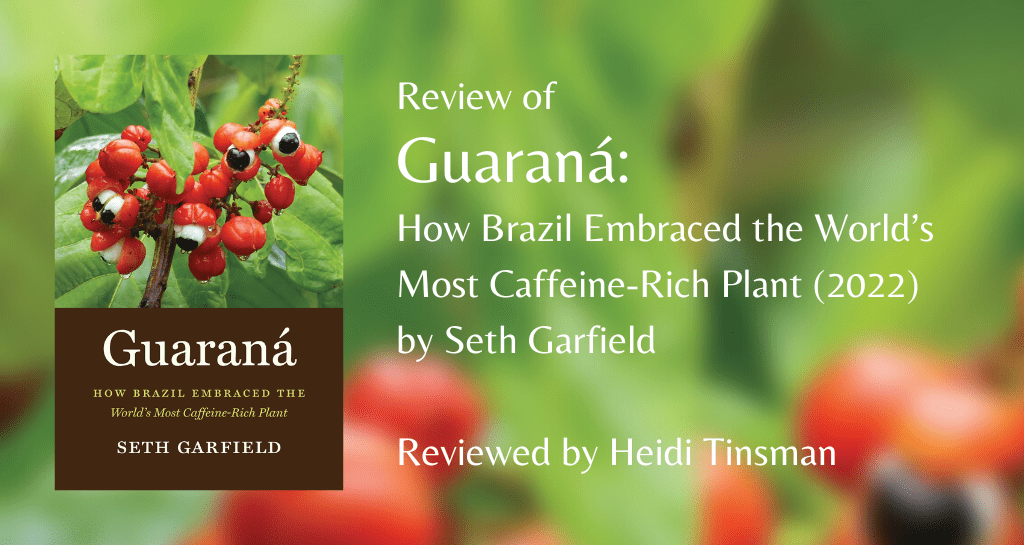
From the editors: Since its creation, Not Even Past has published hundreds of reviews covering a wide range of periods, places, and issues. In this series, we draw from our archives to suggest three great books focused broadly on a single topic.
In this article, we present three fascinating and important studies related to Commodity History.
Commodity history rose to prominence as an analytical perspective that sees beyond the economic value of things and uses them to examine wider social, political, and ecological trends of continuity and change. Due to the global nature of contemporary commodity chains, following a single commodity from its production through distribution to consumption often results in a global narrative. No wonder, then, that many scholars have adopted commodity-centered methodologies as a way to think beyond the nation-state.
The three books collected here masterfully express the power of commodities to tell stories about people, ideas, institutions, and ecological systems. Sven Beckert’s now classic work narrates the emergence of global capitalism through the growing popularity of cotton; John Soluri uses banana cultivation in Honduras to trace patterns of ecological change and trade with the United States; Finally, Seth Garfield explores the cultural symbolism of Guaraná to Brazilian society.
Taken together, the three reviewers – Edward Watson, Felipe Cruz, and Heidi Tinsman– share some eye-opening remarks about the analytical power of commodity history.

Edward Watson writes:
“Sven Beckert places cotton at the center of his colossal history of modern capitalism, arguing that the growth of the industry was the “launching pad for the broader Industrial Revolution.” Beckert follows cotton through a staggering spatial and chronological scope. Spanning five thousand years of cotton’s history, with a particular focus on the seventeenth to twentieth centuries, Empire of Cotton is a tale of the spread of industrialization and the rise of modern global capitalism. Through emphasizing the international nature of the cotton industry, Beckert exemplifies how history of the commodity and global history are ideally suited to each other. Produced over the course of ten years and with a transnational breadth of archive material, Empire of Cotton is a bold, ambitious work that confronts challenges that many historians could only dream of attempting. The result is a popular history that is largely successful in attaining the desirable combination of being both rigorous and entertaining.”
Read the full review here.

Felipe Cruz writes:
“With the banana monoculture spreading along the Honduran north coast, the importance of workers and pathogens as two principal actors in this book comes to light. The advent of the Panama disease, which was not a problem in dispersed small scale farms, but now spread like wildfire in massive plantations, brought about monumental changes. Soluri very meticulously documents the scientific struggle to fight the disease and its correlation to market pressures in the North American market. Because it was easy for the fruteras to get land concessions from the Honduran government, and because they failed to solve the problem through the creation of hybrids, the companies set about shifting plantation grounds to escape the disease, a land grab with great impact on the north coast and its availability of fertile soils.”
Read the full review here.

Heidi Tinsman writes:
“Guaraná: How Brazil Embraced the World’s Most Caffeine-Rich Plant is a luminous social biography of a single Amazonia fruit. Historian Seth Garfield re-invigorates the abiding relevance of the history of commodities as an entry point into Latin American history. As a history of consumption, science, and national mythology, the book invites readers into new terrain in the social life of things. Garfield explores guaraná’s many meanings and pathways over three centuries as it was transformed through Indigenous knowledges, European colonization, modern state-building, and the story of capital. By mid-twentieth century, guaraná had become Brazil’s iconic national soda, famous for its golden hue and energetic punch. Garfield traces the many transnational dynamics and flows that shape guaraná’s uses and meanings. But the book as a whole keeps Brazil and Brazilians center stage. ”
Read the full review here.



